
Commemorating the crucifixion and death of Jesus Christ, Good Friday is perhaps the most solemn day of the year in the Christian calendar. Typical religious observances include fasting, prayer, and meditation. Sometimes people dress in black and maintain silence during the hours of Christ’s suffering.
Good Friday is an official holiday in many countries and in about a dozen states. Easter Monday, too, is often a designated holiday, which means that not only is Good Friday a major day for religious traditions and observances, it’s also the start of a four-day weekend in some locales.
A long spring weekend is a perfect opportunity for a mini-vacation. Whether you decide to spend time with family and friends for religious celebrations or head for the beach for some rest and relaxation — these are the fastest-growing vacation spots around the world — you’re sure to discover that other folks had the same idea so allow extra time and be patient.
To compile a list of Good Friday traditions around the world, 24/7 Tempo consulted dozens of online local guides about Easter traditions and the history behind them. The following list is a selection of several sacred and secular seasonal celebrations from around the globe.
Click here to read about Good Friday traditions from around the world.
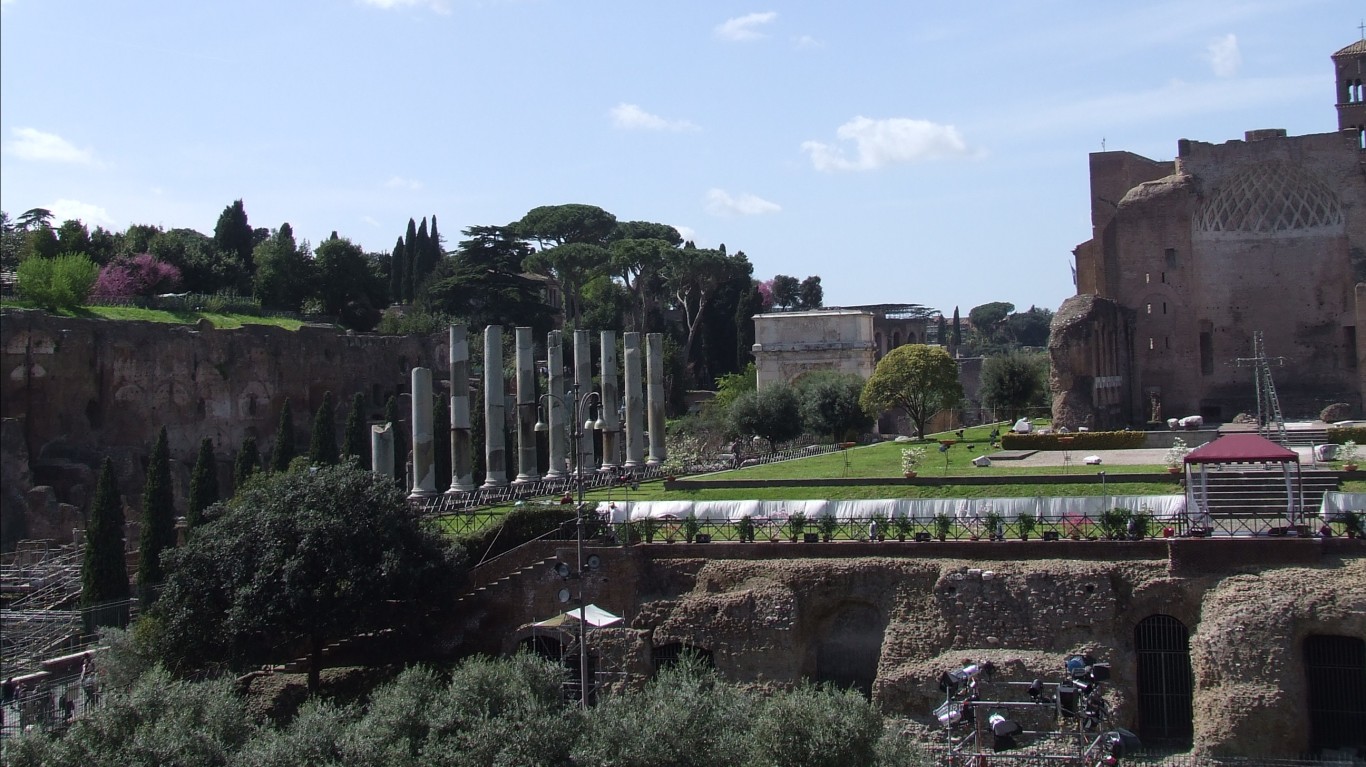
Torch-lit papal procession in Rome, Italy
Good Friday is not a public holiday in Italy, but there’s no shortage of Good Friday observances or people to attend them since many events are free and no tickets are required. Traditionally, Catholic Mass is not celebrated on Good Friday; instead Pope Francis will conduct a special seasonal liturgy at St. Peter’s Basilica in the Vatican. The Via Crucis is a torch-lit procession led by Pope Francis from the Colosseum to Palatine Hill, with stops for prayers at the traditional 14 Stations of the Cross. He is likely to carry a cross at least part of the way, and has announced that his Good Friday meditations will be devoted to victims of human trafficking.
[in-text-ad]
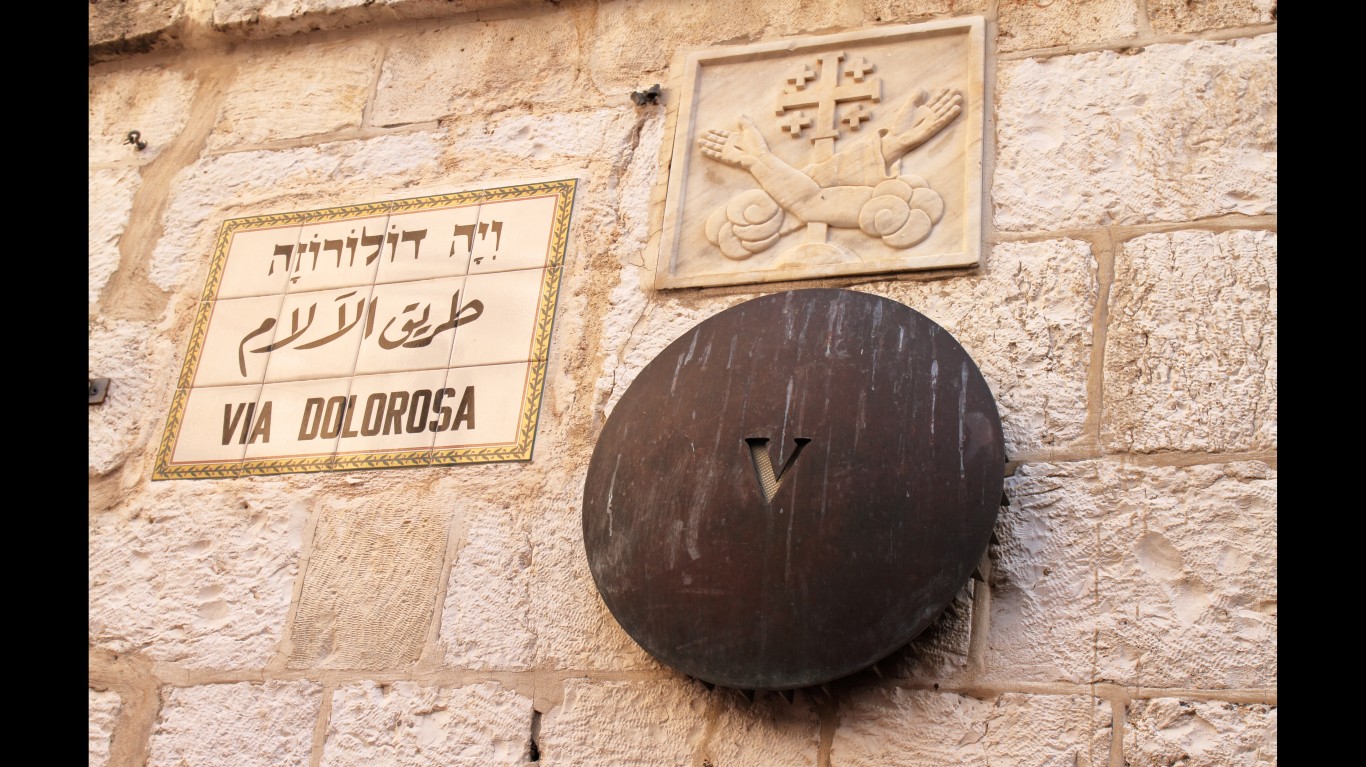
Way of the Cross procession in Jerusalem
On Good Friday in Jerusalem, religious pilgrims, many of them carrying crosses, retrace the steps of Jesus in the place where he spent his last days. At midday, the Way of the Cross procession follows the route taken to Golgotha, the site of his crucifixion. Later in the evening, a cross-bearing funeral procession re-enacts the burial of Jesus, finishing with a service at the Basilica of the Holy Sepulchre.

Dyeing Easter eggs — widespread
From Serbia to the American South, coloring hard-boiled eggs is a longstanding Good Friday tradition. Eggs dyed red are said to represent the blood of Christ, or the tears of his mother, Mary. Some dyers with an artistic bent create heirlooms by applying designs with wax before dipping them into the color bath. Multi-colored eggs are also common, as free-styling participants strive to make their unique statement on the tiny, fragile surfaces.

Brotherhood processions in Seville, Spain
Following a tradition stretching back hundreds of years, Semana Santa (Holy Week) in Seville is marked by dozens of local parishes. The marchers don medieval garb of long robes and pointed hoods and walk — often on bare feet — to the cathedral in the center of town. An estimated 50,000 observers typically pack the ancient, narrow streets for the haunting sight of the silent, candle-lit legions of walkers, some bearing crosses and accompanied by drumbeats. Spectators show their approval by tossing rose petals or confetti at ornate floats that bear statues of Christ and the Virgin Mary, which usually grace church altars.
[in-text-ad-2]

Fortune-telling in Jamaica
To follow a Jamaican tradition, add an egg white to a glass of water before sunrise on Good Friday, then look at it as the sun goes up to see if the white settles into an image that may hint at the future. For example, a car-shaped pattern in the egg white could mean a new vehicle or a road trip. If you’re looking for another way to enjoy eggs during the Easter season, check out Bessieres, France, on Easter Monday, when the locals cook up 15,000 eggs to create a giant omelet.

Passion Plays in London, England
Thousands of spectators are treated to a Good Friday Passion Play held annually in Trafalgar Square in the center of London. Up to 20,000 viewers typically attend each of the two midday performances, put on by a cast of more than 100 costumed actors, plus a donkey and horses. Parents are warned that the realistically depicted crucifixion scenes might not be appropriate for all children.
[in-text-ad]

Commercials ban in New Zealand
Because of Good Friday’s religious significance, the day is associated with a variety of bans and restrictions. For example, some faiths encourage adherents to abstain from eating meat, and certain municipalities prohibit or limit the sale of alcohol. New Zealand has one of the most unusual practices. Thanks to the Broadcast Act of 1989, TV and radio broadcasters are forbidden from airing commercials on Good Friday.

Alfombras in Central America
In some Central American countries, including Guatemala, El Salvador and Honduras, the streets are decorated with vividly hued designs along the route of Good Friday processions. The tradition of creating these “alfombras,” Spanish for carpet or rug, originated in Spain’s Andalusia region. The practice crossed the pond with missionaries more than 400 years ago. The patterns often depict religious or natural images, created from brightly colored sawdust. Alfombras are not meant to endure. The patterns disappear beneath the feet of the marchers and spectators.

Good Friday Fish Fries in Central US
From Nashville to St. Louis, from Pittsburgh to Kansas City, across Ohio, and elsewhere in the heartland, Good Friday is the night to seek out a down-home fish fry. Sponsored by churches, youth groups, volunteer fire departments, and organizations like the Knights of Columbus, the dinners are held at community gathering places such as American Legion halls, school auditoriums, and restaurants. One goal is to encourage diners to follow the tradition of skipping meat on Good Friday. But the multipurpose events also promote fellowship and community outreach, and are great fund-raisers for civic or church-sponsored groups and activities.
[in-text-ad-2]
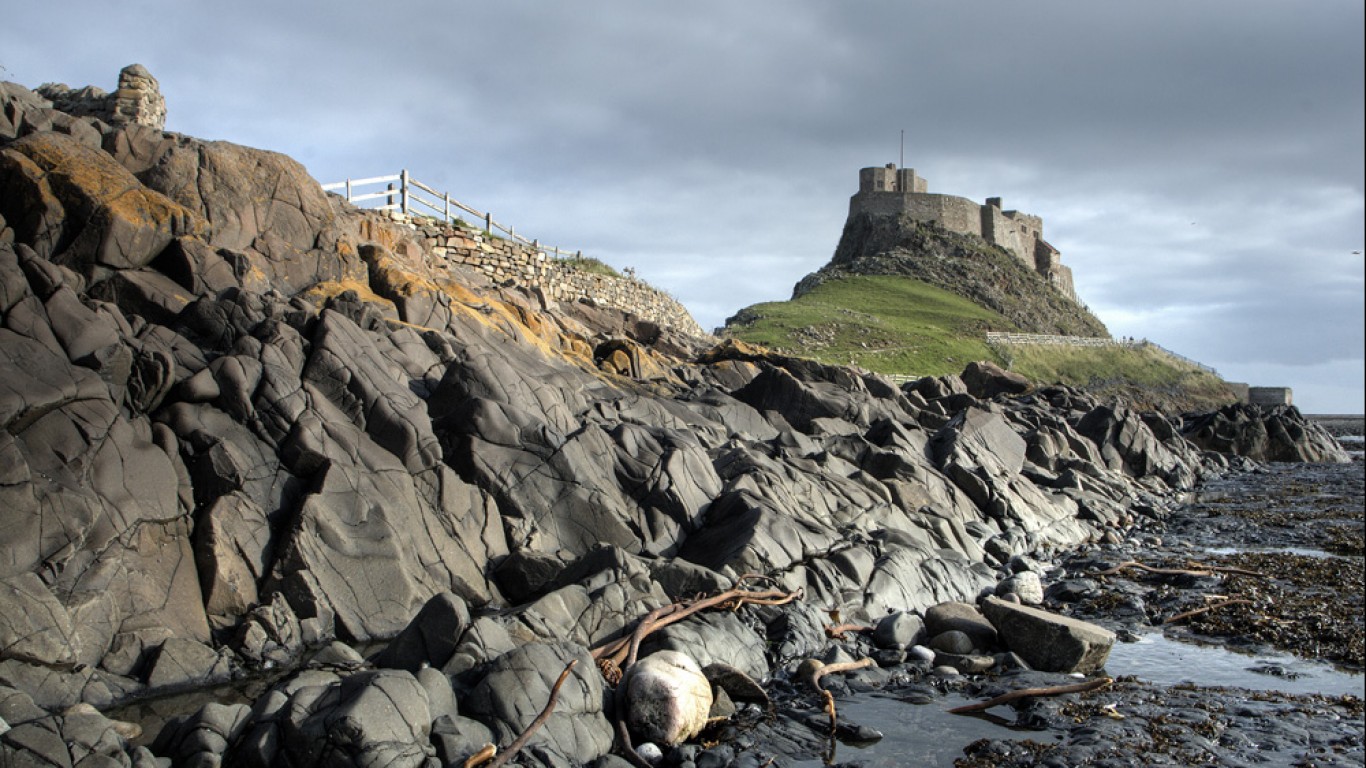
March to the Holy Island of Lindisfarne in England
Since the mid-1970s, dozens of pilgrims have embarked on a week-long hike that has them arriving at the Holy Island of Lindisfarne on Good Friday. Many of the participants carry crosses during the 70- to 120-mile journey, a tradition established by members of the organization Student Cross. Timing is everything, as the causeway connecting the island to the mainland is covered by high tides for part of each day. Considered to be among the holiest places in the UK, St. Aidan founded a monastery on the island in the 7th century. The Lindisfarne Gospels, an illuminated manuscript now in the British Museum, was produced on the Holy Island during that era.
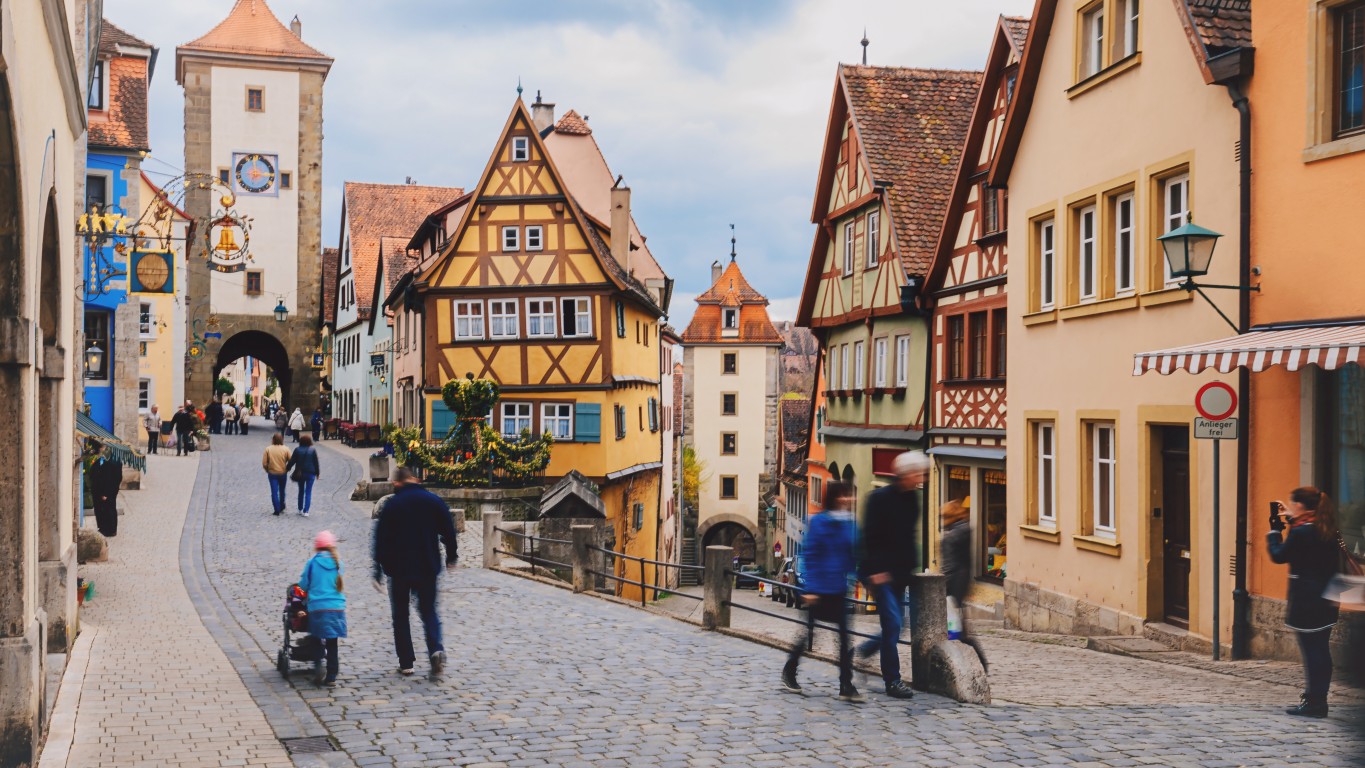
Hang up your dancing shoes in Germany
Good Friday and Easter Monday are official holidays in Germany, but you won’t be able to start the four-day weekend by busting some moves on the dance floor. In a nod to the day’s religious significance, Good Friday is designated one of the country’s “silent” holidays, which have a number of restrictions, including a “Tanzverbot” or dance ban. The edict is in effect for all or part of the holiday weekend, with hours of prohibition varying by region.
[in-text-ad]
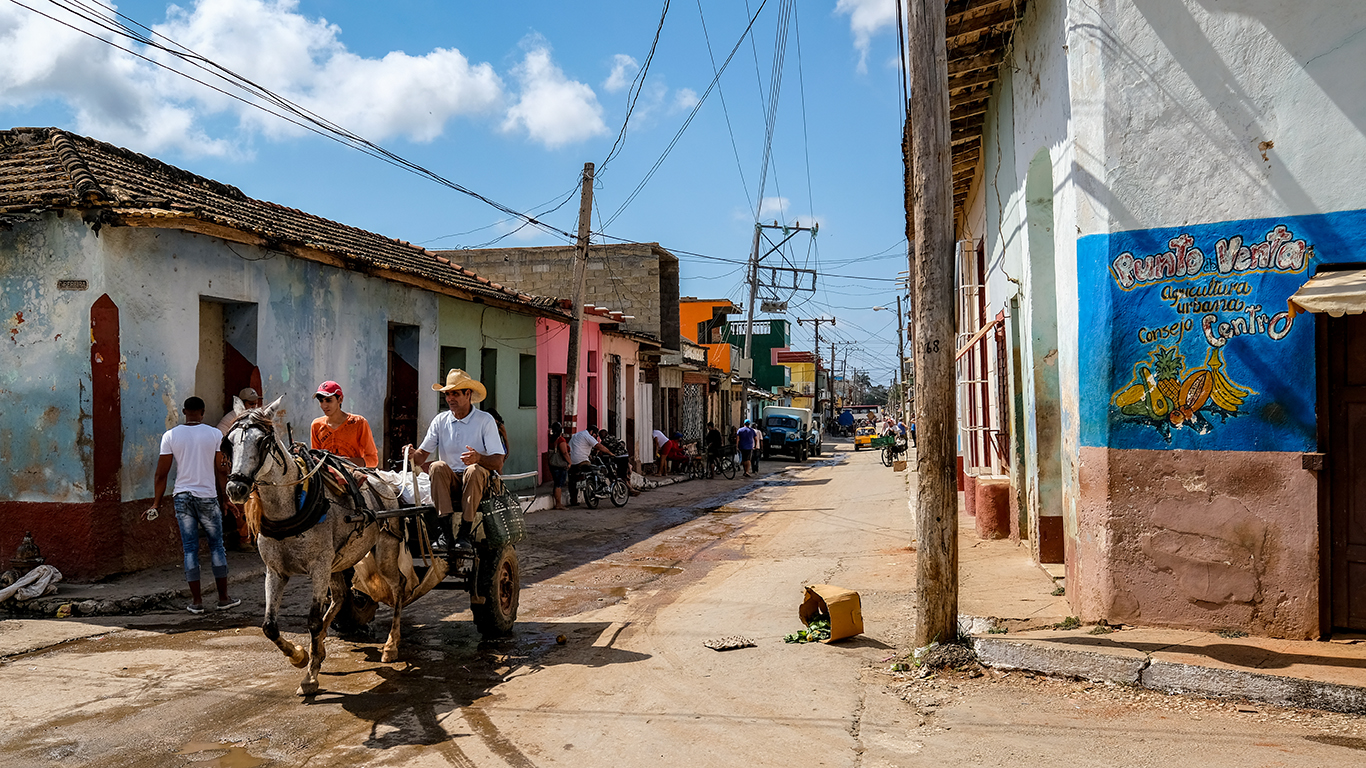
Bobolees in Trinidad and Tobago
Usually made of old clothes, Bobolees are stuffed effigies that pop up throughout Trinidad and Tobago during the week before Easter. The scarecrow-like figures represent Judas, who betrayed Christ for 30 pieces of silver. When Good Friday rolls around he gets what’s coming to him, as people use sticks to beat the stuffing out of the Bobolees. In recent times, the identity of the figure has become more flexible, as Bobolees are sometimes designated to represent a public figure or personal acquaintance who evokes a less-than-positive sentiment.

Hot cross buns — mainly in UK, Canada, Australia
Only available at this time of year, these sweet buns are made from a yeast dough augmented with raisins, currants and sometimes a little citron. They’re decorated with a cross made of light frosting, two strips of plain dough, or just a knife imprint. The hot cross buns tradition is savored by cultures around the world, going back to at least the 16th century when Queen Elizabeth I is said to have forbidden their sale except on Good Friday, Christmas or for burials. The last two occasions have fallen by the wayside: Once Good Friday is over, you’re unlikely to see the treats until next year.
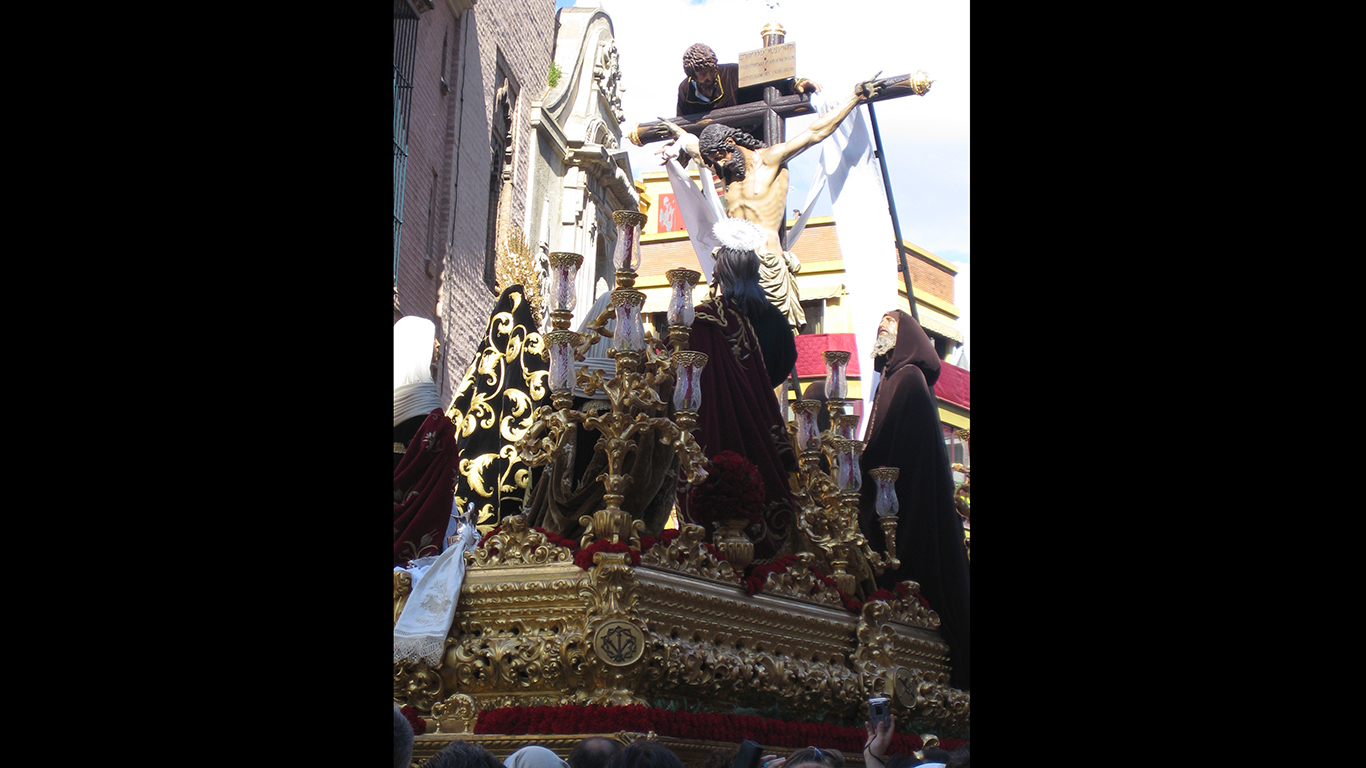
Way of the Cross procession in Trinidad, Cuba
Pope Benedict visited Cuba in 2012, and in his honor, and at his request, Easter observances were permitted on the island for the first time in half a century. While still not widely celebrated, interest in Easter traditions has increased since permission was permanently reinstated in 2014. One of the biggest events is the Good Friday parade in the city of Trinidad, a UNESCO World Heritage site. Chanting and singing are important aspects of the candle-lit procession, which follows a route marked by crosses. Local lore says the crosses were originally positioned to trick Colonial-era pirates or deter them from looting.
[in-text-ad-2]
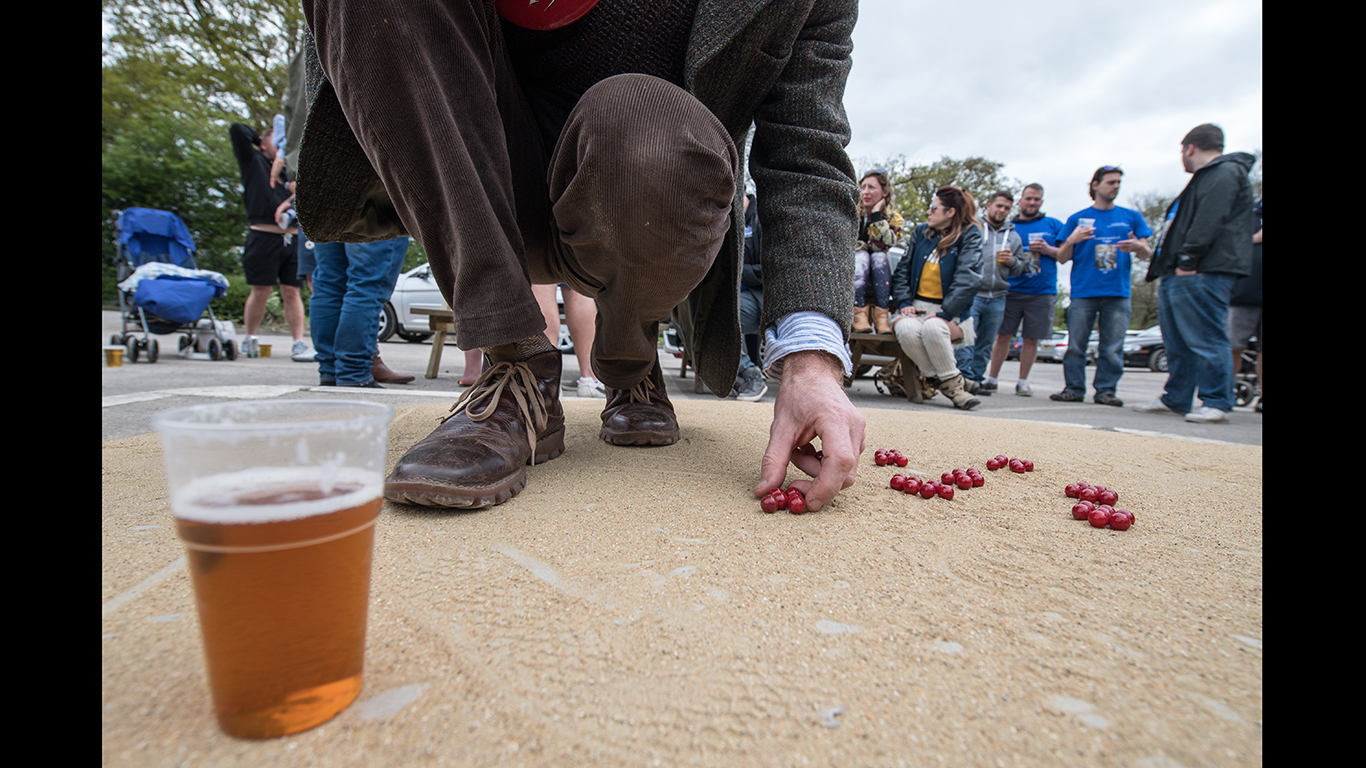
Marbles championship in Sussex, England
In Sussex, England, Good Friday is sometimes called “Marbles Day,” since by centuries-long tradition it marks the end of the local marbles season. The game of marbles has an especially deep history in the Sussex town of Tinsley Green, where the British and World Marbles Championship is held annually on Good Friday. Local lore says the event started in the 16th century, and continued until about 1900 when it went on a three-decade hiatus. Good Friday marbles have been going strong there since that hiatus ended in 1932.
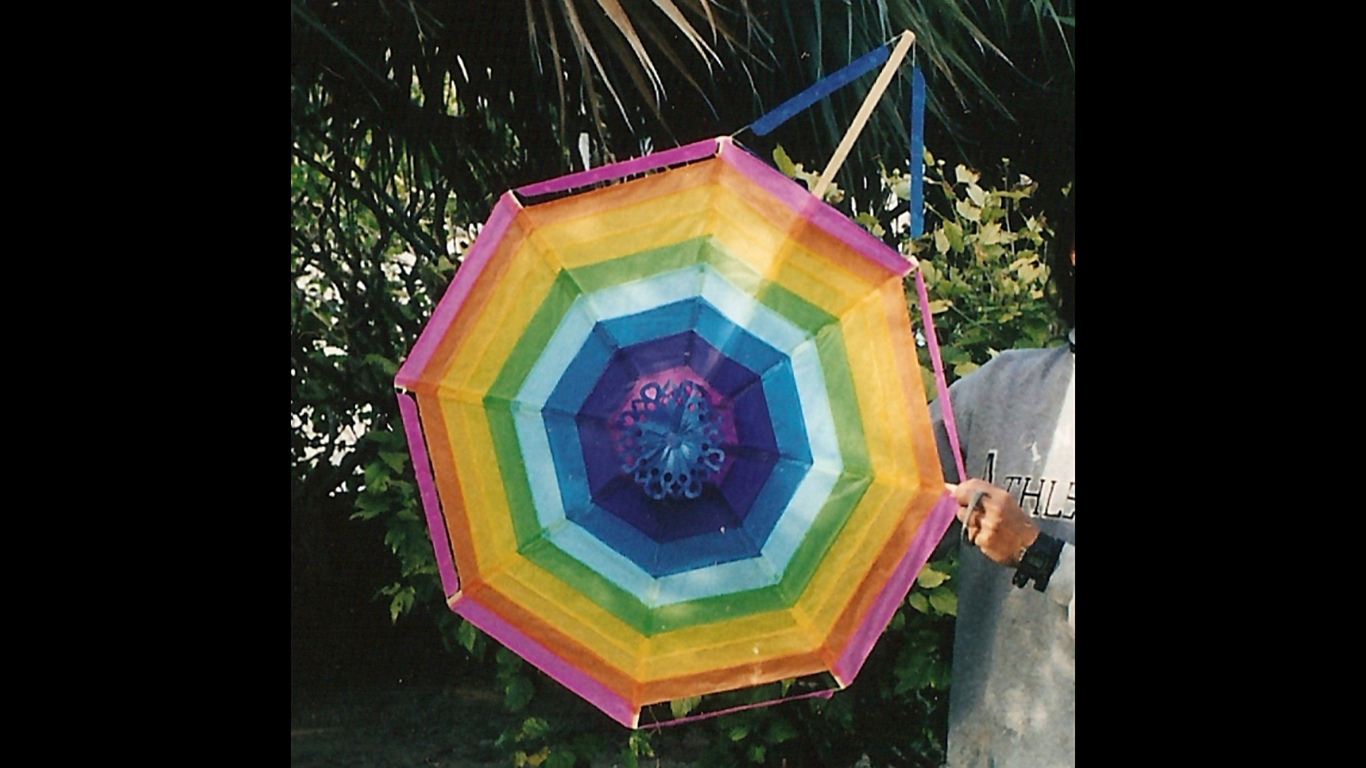
Kite flying in Bermuda
Though Good Friday is often associated with penance and fasting to mark the crucifixion of Christ, some traditions include a shot of optimism in anticipation of Easter and the resurrection just days away. That’s the case with Bermuda’s practice of flying kites on Good Friday. According to local lore, a teacher used a kite to illustrate the concept of the ascension of Jesus to his young students. After a few hours of kite-flying on a breezy Bermuda beach, participants work up an appetite for the customary fishcakes — no meat on Good Friday! — sold at sea-side stands.
[in-text-ad]
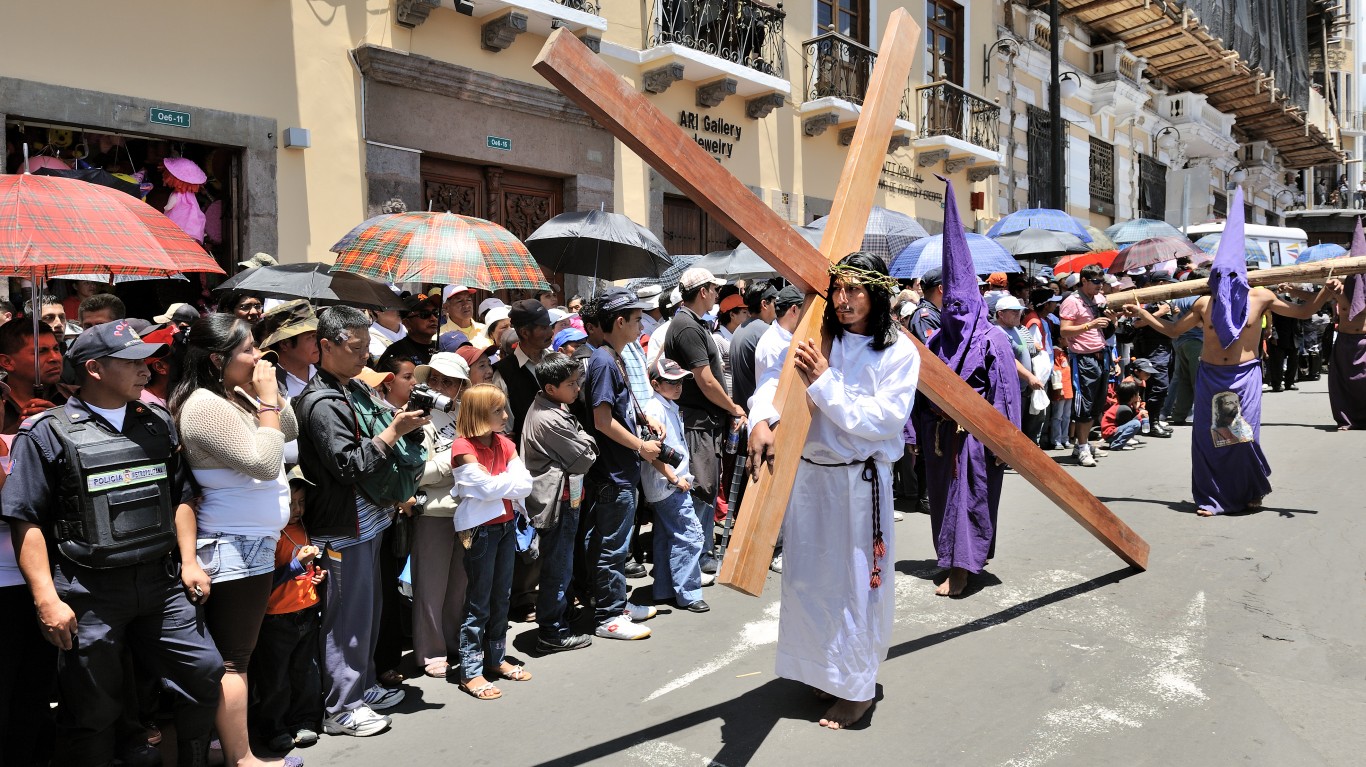
Good Friday re-enactments in Philippines
Good Friday is a national holiday in the Philippines. It is observed as a day of penance, and a day of reckoning for fulfilling vows made during prayers for special intentions. In areas such as the Pampanga region, the devout may flagellate themselves, don crowns of thorns, and even have themselves nailed to a cross to recognize Jesus’ suffering and to atone for their sins. The Catholic Church discourages such practices, urging more moderate observances.
“The Next NVIDIA” Could Change Your Life
If you missed out on NVIDIA’s historic run, your chance to see life-changing profits from AI isn’t over.
The 24/7 Wall Street Analyst who first called NVIDIA’s AI-fueled rise in 2009 just published a brand-new research report named “The Next NVIDIA.”
Click here to download your FREE copy.
Thank you for reading! Have some feedback for us?
Contact the 24/7 Wall St. editorial team.
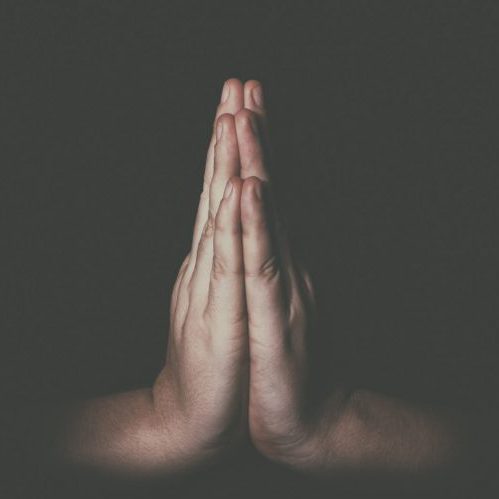 24/7 Wall St.
24/7 Wall St. 24/7 Wall St.
24/7 Wall St.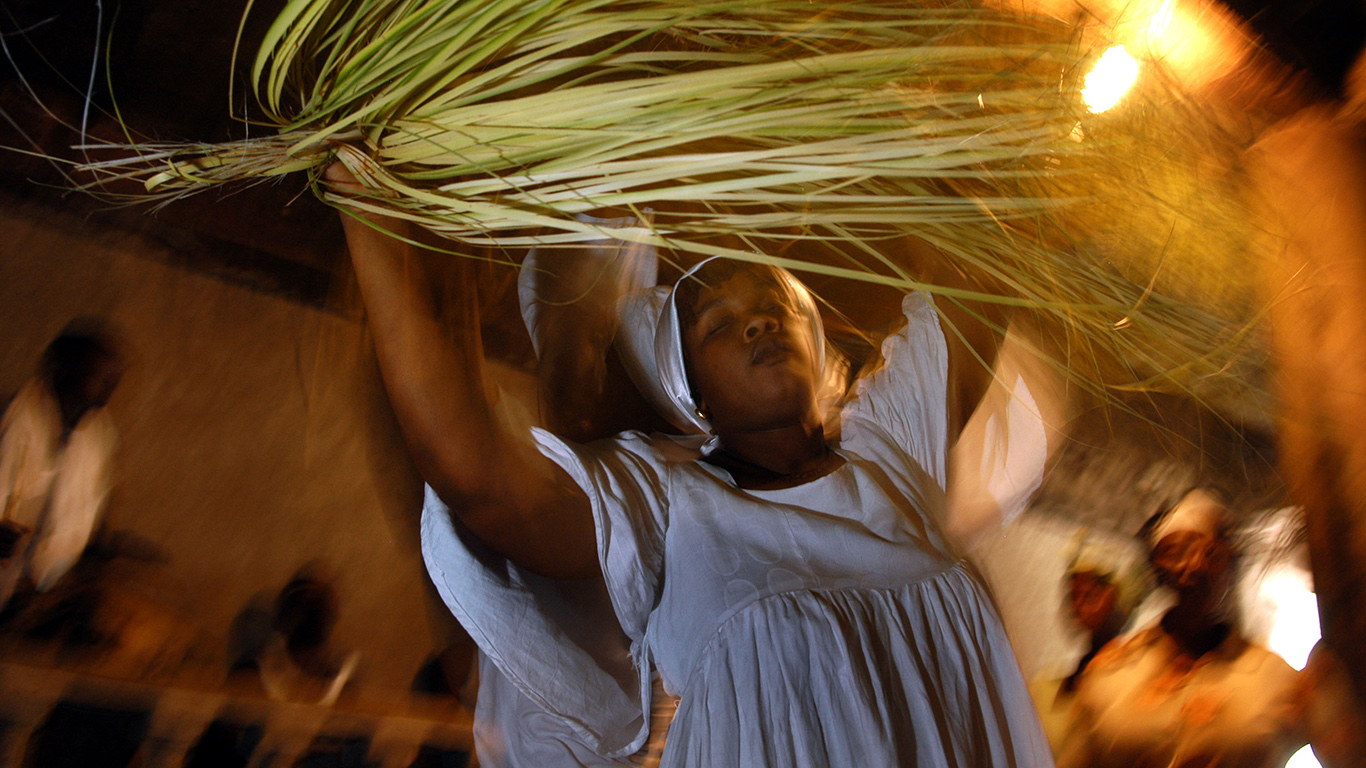 24/7 Wall St.
24/7 Wall St.

